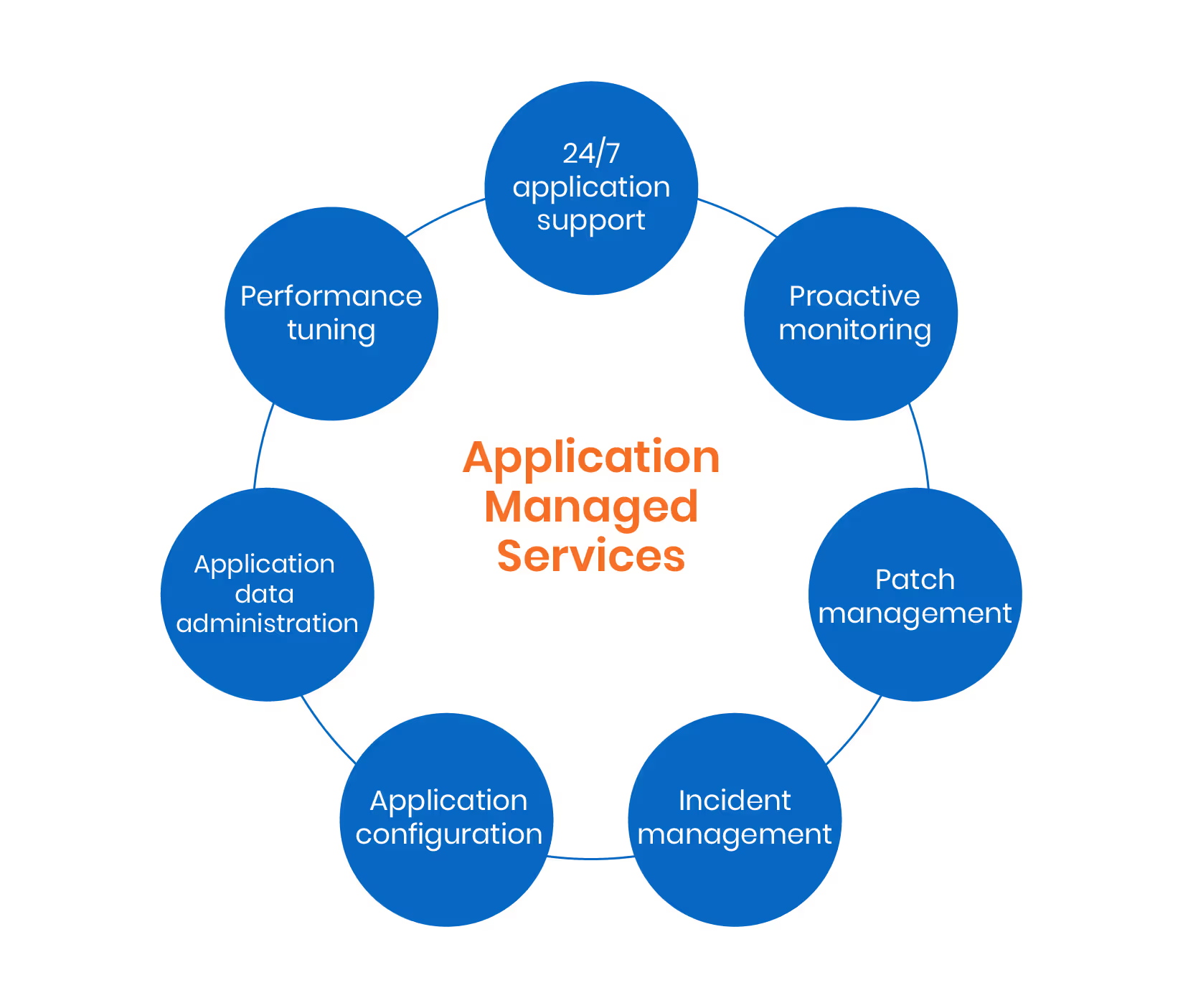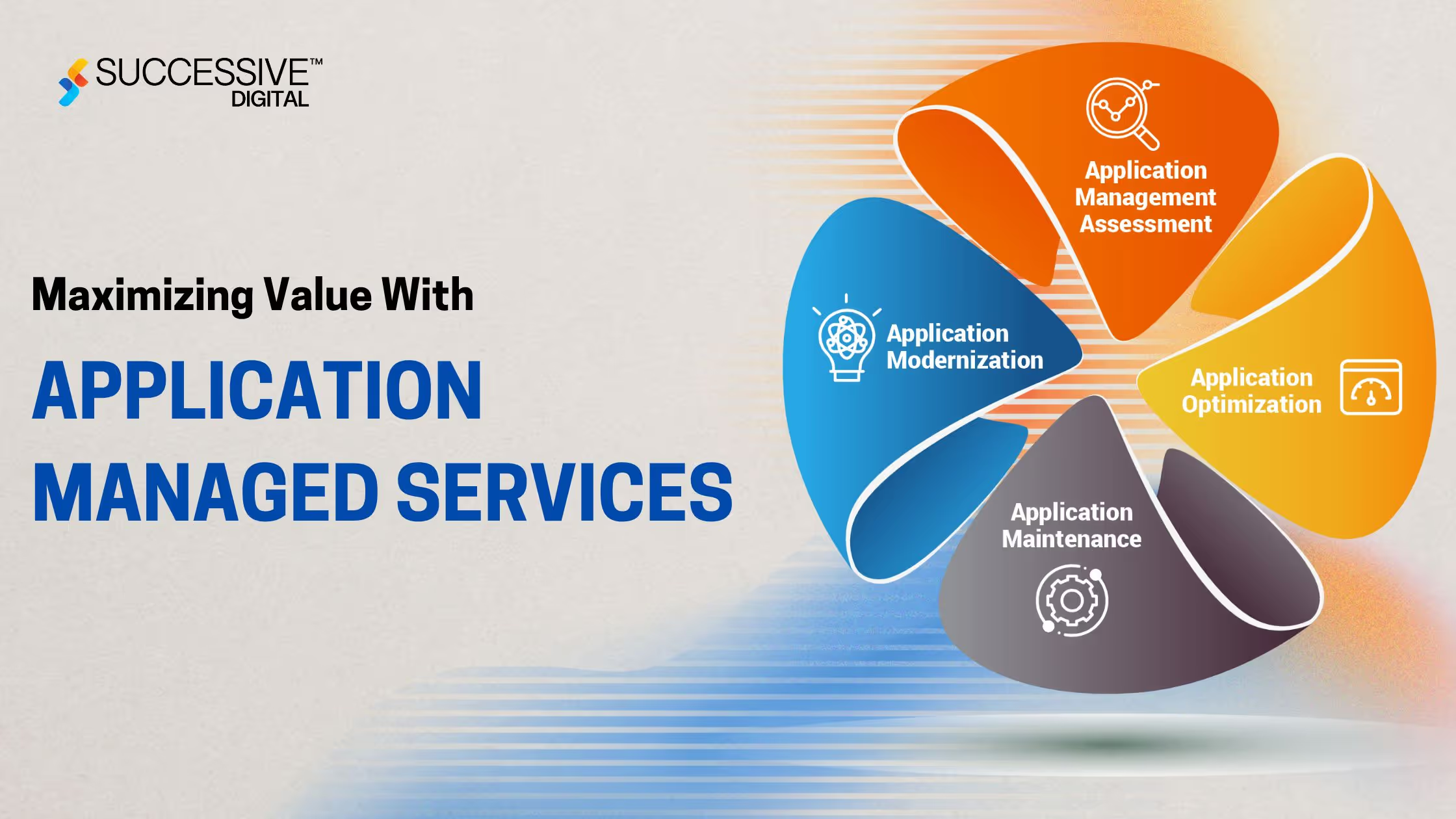Enterprises use applications for everything from managing content, to planning resources, to gathering business intelligence. But as these applications grow in complexity, they get harder to manage and maintain. Over time, as technologies become obsolete, the cost of maintaining legacy applications gets higher and it becomes harder to find experienced developers who can work in those languages. Small updates can break the application and disrupt business, causing costs to escalate. Depending on the context, the costs of failure can be staggering. Over time, issues accumulate, making it difficult to prioritize and resolve bugs and apply fixes on schedule. And all this takes valuable resources away from the tasks that generate more value for the business.One way for enterprises to solve these challenges is by using application managed services or AMS.
What are application managed services?
Managed services demand has been on the rise over the past few years. According to Statista, the global managed services market is expected to grow to USD 274 billion by 2026, up from USD 152.02 billion in 2020. This growth has been driven in part by the increased complexity that enterprises face when running critical applications. If you're an enterprise, it's likely that your infrastructure is growing rapidly. And with more applications in play, there are also a larger number of vulnerabilities and dependencies to manage, not to mention ever-changing business needs and security threats you need to stay on top of. Additionally, budgets remain tight for enterprises across the board right now.As enterprises accelerate their digital transformation (DX) efforts, the need for finding capable engineering talent grows. Strategic partners can help fill this gap. Enterprises can outsource some of their application management functions to managed service providers. Partners who specialize in monitoring, management, bug-fixing and optimization for enterprise applications can help enterprises increase their efficiency and free up internal resources while improving the functionality and UX of their applications. While application managed services have traditionally included support and maintenance functions, AMS can also cover IT infrastructure monitoring, quality assurance (QA), enhancements, and advisory services, among others.

Read Node.js vs. Go: Which Should You Choose for Backend Development?
Benefits of AMS

Done well, AMS increases employee productivity and frees up internal resources to focus on the most important tasks required to generate more value for your business. AMS can help you:
- Scale resources up and down as needed. An AMS provider can help you keep pace with peaks and valleys in your business cycle by letting you scale resources. You get a great deal of flexibility in the form of an extended team that you can access as needed. By eliminating the need to hire and fire staff to meet changing business requirements, you can lower your operational costs and increase your business' profitability.
- Implement a proactive strategy rather than being reactive. When you have the support of an AMS provider, you can free up your inhouse resources to focus on higher value tasks and seize opportunities you might otherwise have missed. This helps you facilitate innovation across your organization and gain competitive advantage. You can also spot trends and address issues before they affect your customer experience.
- Provide better service to your customers. AMS providers implement standard service level agreements (SLAs) that guarantee quick resolution of any issues. You can ensure that SLAs are tailor-made to suit the needs of your customer base. By doing this, you can deliver better experiences to your customers.
Read 7 Reasons Why Node.js Is Perfect for Enterprise Development
Getting value from AMS

When outsourcing is viewed primarily as a means of cutting costs, it can fail at adding value or enabling innovation. Enterprises can find that their outsourcing providers fail to understand their business and the intricacies of their applications and data, leading to poor outcomes in terms of costs and issues that arise in daily operations. This can especially be true when projects are thrown over the wall to outsourcing providers with little oversight or management.However, results can be dramatically different when projects are outsourced correctly. Working closely with service providers who understand your business is critical. When there is a close and trusted relationship between you and your service providers, you end up with better results — not just fewer bugs and improved application performance, but also better UX, streamlined processes, and improved decision-making. Partnerships with service providers that can provide consultative value will, over time, prove themselves to be a real asset to your enterprise.By starting small, creating alignment, and building up from there, enterprises can maximize the value they get from AMS. Here are some questions to get you started:
- Does your vendor have a clearly defined SLA? SLAs help you set expectations at the very start of your partnership. They also allow you to measure and quantify the success of your relationship. Consider how your SLA can benefit from additions that help ensure good performance of your applications.
- Does your vendor understand how your business works? Enterprise IT environments are often complex, with multiple applications and dependencies. If a provider does not understand that complexity, they can create inefficient workflows or cause other problems that affect the end-user experience.
- Do they understand how your industry works and the challenges you face? You need to be confident that whoever is managing your application understands not just general best practices for application management, but also the intricacies of your industry, including regulatory and compliance requirements.
- Are there mechanisms in place for you to provide feedback and input into vendor processes? When a provider understands how an application works and what is important to the business, they can work with you to create key performance indicators (KPIs) and SLAs that best suit your business and users. A good understanding of your business will also allow providers to act quickly, avoiding both SLA failures and costly user frustration.
- Are they experienced at managing applications with complex dependencies or critical functions? Not all issues are created equal, and you'll want a provider that can handle different types of issues with ease.
- Do they have a well-defined business continuity plan? You want to know that your application and its data will be safe in the event of a disaster. Your provider should have a plan in place to ensure that everything is taken care of on their end, so you can focus on your users.
- Do they have a clear path that shows how this partnership will help you achieve your business goals? Your vendor should understand what success looks like for your organization.
Your answers to these questions should help guide you toward a service provider that can add real value to your business. By asking the right questions, you can ensure that your AMS partnership delivers on its promise of better applications, happier users, and increased revenue.
In uncertain times, AMS can help you stay ahead
Especially now, at a time when enterprises have been heavily impacted by the COVID-19 pandemic, and when businesses around the world have been thrown into working remotely with little preparation, application management services can really make an impact. AMS providers can help enterprises automate processes, minimize risks, and streamline decision-making. They can greatly assist businesses in maintaining and, more importantly, advancing their digital transformation efforts.Read Why You Should Adopt Serverless Architecture
.avif)










.jpg)









